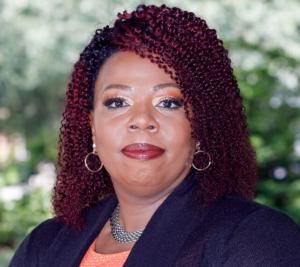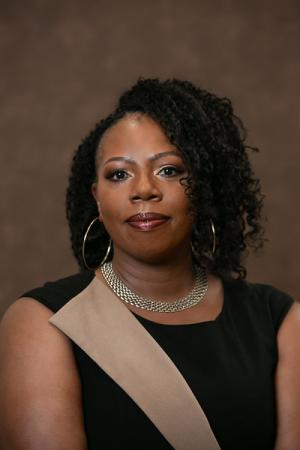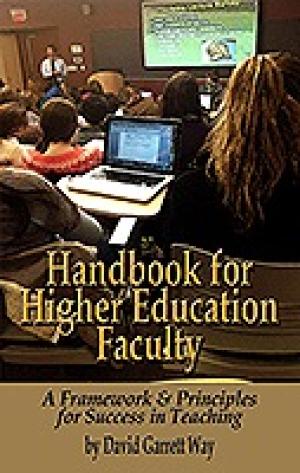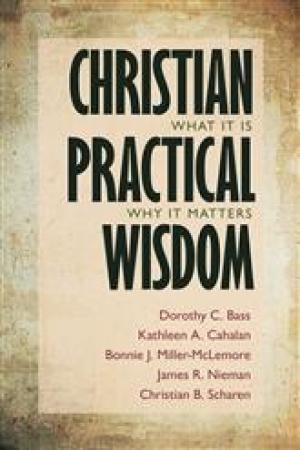Resources by Angela N. Parker

About a year ago I was teaching a Greek class where we were translating Paul’s short letter to Philemon. I mentioned the idea that States could use the Fugitive Slave Act of 1850 in order to curtail the rights of women to travel across state lines to secure an abortion. In case you are not aware, friends, the Fugitive Slave Act of 1850 criminalized any provision of aid or sanctuary to escaped enslaved individuals. And I was not just making it up. There are articles both in newspapers and legal journals to document my reference.[i]Unbeknownst to me, a student took issue with my statement and decided to correct me. However, they did not correct me during the class period and they did not correct me by scheduling a time to meet with me. Neither did the student decide to send me an e-mail. The student decided to send an e-mail to all of the White students in the classroom. The student did not send the e-mail to any of the Black students in the classroom. As you can probably discern from the title of this blog, the e-mail began with “I love Dr. Parker but. . . .” Of course, one of my students sent the e-mail to me and we had to process it during the next class period which, of course, was not part of my lesson plan nor a part of my syllabus.In the e-mail, the student indicated that it is ridiculous to imagine that states’ rights could supersede the rights of unrestricted travel for US citizens, regardless of whether one leaves the state for an abortion or vacation. The e-mail then went on to state that “Statistics show that for every one white abortion there are five to six black abortions. Black persons should view abortion as a white man’s way of trying to limit the population of blacks in the United States.” The tone was almost as if Black people should be grateful that White Republicans (this person identified as Republican in the e-mail) loved them so much that they were trying to stop abortions.There are two predominant ways to think about love paternalism and both come through Pauline literature. The first is the idea of a love that gives up rights. This stems from Paul’s use of the terms the weak and the strong. The idea is that the strong give up their right to do something if that thing, in fact, causes the weak to stumble. The classic example is in the case of meat sacrificed to idols in 1 Corinthians 8-10. A contemporary example can be found in the idea of men telling woman to cover up themselves in case they arouse a man’s sexual interest and suffer a rape. This is an instance of victim-blaming and leaves the onus on a woman instead of arguing that a man should actually have self-control.[ii]Another aspect of love paternalism involves limiting someone’s autonomy and freedom for their own good. I see this idea particularly in the student’s statement that Black persons should view abortion as a white man’s way of trying to limit the population of blacks in the United States. Throughout history White people do whatever they can to justify their understanding of why they mistreat Black people. For example, during the transatlantic slave trade, slaveowners and traders justified trafficking enslaved persons by saying that they were introducing them to the gospel.What should the African American female professor’s response be when love paternalism smacks her in the face in the midst of a semester when she is teaching Greek? Of course, she must confront it head-on and be able to maneuver and be nimble right in the middle of the semester. Pedagogically, I table any theological discussion during Greek translation because the focus during that particular time is on morphology and syntax within the text. However, in this instance I did allow a moment to discuss the e-mail and then connect it to the manipulative ways in which Paul’s rhetoric shows up in the letter to Philemon. We tackled the e-mail through power dynamics. We also had to have a frank discussion on why the student only sent the e-mail to White students.Bottom line: Openness, frank discussions, and nimbleness are required when love paternalism unexpectedly affronts a professor. I do not know if my White colleagues experience such moments in the classroom. However, you never know what your minoritized colleagues are going through when we are teaching our classes, so please be kind. Notes & Bibliography[i] See Angela N. Parker. “You Can’t Pay Back What You Never Owned: A Conversation on Reparations and Paul’s Letter to Philemon,” in Reparations and the Theological Disciplines: Prophetic Voices for Remembrance, Reckoning, and Repair, ed. M. Barram, D.G.I. Hart, G. Kettering, and M.J. Rhodes, (Lexington Books/Fortress Academic, 2023), 91-104. https://www.thenation.com/article/society/abortion-missouri/; https://www.law.georgetown.edu/gender-journal/online/volume-xxiii-online/legal-vigilantism-a-discussion-of-the-new-wave-of-abortion-restrictions-and-the-fugitive-slave-acts/.[ii] See Roger E. Olson, Whatever Happened to the Christian Principle of “Love Paternalism?” (Newstex, 2019).

I remember dial-up modems and the exhilaration of logging onto AOL.com as a teenager. A few years later, I experienced the novelty of Facebook. Duke Divinity School (DDS) advised all of its masters’ students in the 2008 incoming cohort to create Facebook accounts so we could stay connected and support one another through the first year of our graduate program. DDS recognized that this would be a time where students begin to deconstruct presupposed understandings of religion, Bible, and the theologies that we had received from our families of origin and church contexts. Reflecting back on that time, I feel as if the beginning of my deconstruction was wed to the rising age of social media. Now as a professor of the New Testament in the age of social media, what should some of my best practices entail? While difficult to define, the term “social media” identifies the various internet applications that allow users to construct their profiles while also creating content that connects and networks various groups of people. While social media is supposed to be about “connection,” I imagine that we all have experienced “internet trolls,” folks who try to bait and upset readers with disturbing comments. As professors of religion and theology, I would argue that we are the prime targets for internet trolls just by virtue of the nature of our work at a time where there seems to be rising White Christian nationalism in the United States. So, I often ask myself questions about the role of the professor in the age of social media. For example, in my context, our Director of Outreach and Alumni Relations requests that faculty increase their social media presence as a way to connect with alumni who are out working in the world. Can I carefully curate my social media presence to let those alumni know that I support them from afar? As a professor, what content can I create that allows alumni to be refreshed as they do the difficult work of leading congregations and parachurch ministries? Moreover, can social media serve as a way for faculty to connect with prospective students as we all experience the feelings of scarcity in theological education? Is this another area of “service” that faculty can add to their tenure portfolios (assuming one has a job with tenure!)? While I am not sure of the proper answers to the above questions, I certainly try to be cognizant of what the next generations of theological students may look like. Gen Z, for example, born between 1997 to 2012, is the first generation to have grown up with ALL THE TECHNOLOGY. Further, they will buy products from social media sites more than any other generation. Is there a way for Millennial, Gen X, and Boomer faculty to capitalize on connecting with Gen Z through social media? I think that is a conversation that must be had in our various theological faculties. I started @BoozyBibleScholar on TikTok and Instagram, providing segments called “One Minute Womanism” and “Scripture Through Womanist Eyes” as a way to show my growing community that there are other voices besides the conservative right-leaning interpreters of scripture. Now, I will definitely not be keeping up with the latest TikTok dance trends, but I will add my own particular voice to the ever-growing vacuum of social media to provide a brave space for the folks who may be feeling left behind and kicked out of Christianity. Just as in the opening of this reflection I recognized my own deconstruction during the rise of the social media age, I imagine that Gen Z experiences similar deconstruction(s). As I peruse social media, it seems to me that the loudest voices in Christianity today tend to be destructive voices. If you have pondered a desire to help silence those destructive voices, I implore you to act now. Find ways to make your scholarship available to the public. I wholeheartedly believe that one of the professor’s jobs in the age of social media is to be a transformative voice in contrast to those who will try to tear people down. Instead of letting John Piper, John MacArthur, or Voddie Bauchaum be the loudest voices in public religious discourse, professors of religion and theology owe the American public counter voices in the age of social media. My hope is that my social media presence will at least point some to believe that there are other ways to be “Christian” in a world that has vastly devalued such an identity. TikTok: @BoozyBibleScholar and Instagram: @BoozyBibleScholar

This semester I taught the Gospel of Luke for the first time. My class was a seminar style class with seven students who worked diligently through the Lucan text while also engaging various scholars and they ways that these scholars used a variety of methods for interpretation. Since most of my published works are in the Gospels of Mark and John, teaching the Gospel of Luke was a new experience for me. During the course of this class, my students dubbed me as their most “confessional” professor. At first, I disliked the term because, in my mind, I was still seeking to embody the detached state in my teaching approach which would have been very similar to many of the professors with whom I studied New Testament texts. However, I had to ask myself why I was seeking to be detached within this particular pedagogical space. Upon reflection, I realized that the makeup of the class was one reason I wanted to appear detached. In my Gospel of Luke class, I had a variety of students ranging from budding womanist and feminist students to strictly complementarian male church leaders. As an African American woman professor, I have found in my years of teaching that strictly complementarian male church leaders often avoid my classes just because of my embodied presence. Because I knew that some of our conversations could become tense, I wanted to remain a detached presence even though my embodied presence oftentimes cannot afford to be detached. My particular embodied presence makes a difference in the ways that students receive information. Realizing this, I embraced the idea of being confessional—with some caveats. Most scholars understand confessional approaches to religious education as not valuing differing interpretations of understandings of scripture and theological concepts.[1] Confessional scholars often believe that different opinions cannot be valued and accommodated within confessional spaces. I would offer something slightly difference and nuanced. Turning to the work of Patricia Hill Collins, I argue that even though I am an ordained minister and seminary professor, my “confessions” are not rooted in the above-referenced (and outdated) understandings of confession but are confessional with a hint of testimonial authority. Collins argues that academia is influenced by various forms of critical analysis. Citing critical race theory, Collins discusses that said theory was advanced by legal scholars, practitioners, and activists while drawing upon dual theoretical traditions: specifically, structural analysis within the social sciences as well as narrative traditions within the humanities.[2] Collins further explains that the narrative traditions stem from the testimonial authority of storytelling. The recipients of the worst practices within the legal system told their stories as a way to bring about change to the system. As I reflect on what I am calling “Womanist Confession as a Form of Embodied Teaching,” I realize that even as I explain the various theories and methods of biblical interpretation, most of my examples and discussion prompts stem from my own life and being as a Womanist New Testament scholar. Similar to Collins’ understanding of the testimonial authority of storytelling, I often reiterate stories of the worst practices of biblical interpretation that continue to gaslight within traditional confessional spaces. By doing this, Scholars can bring about change in the academic study of the Bible. For example, when studying Mary’s Magnificat in Luke 2, I prompted the class to think about questions of consent, knowing that my own experiences of sexual assault lie in the background of my questions. While I may not explicitly tell stories about such experiences, I do allude to and testify about different experiences in my life and how male pastors have gaslit me into believing that the sexual assault was not as bad as it was.[3] Statistics also help in explaining the importance of asking these questions. According to the CDC, one in four women experience a rape or attempted rape in their lifetime.[4] There were five women in my class so that means that two of us has had such an experience. How does the conversation of Mary’s “consent” play out when we ask these questions while reading the biblical text? Oftentimes, male students do not think that such questions belong in the conversation but, as I argue to them, preachers may miss more than half of their congregation if they ignore such questions. As pedagogues, we are not objective, dispassionate, and detached presences in our classrooms. I hope that each and every one of us continues to interrogate our own identities and our own stories as we enter the classroom space. [1] L. Philip Barnes, Education, Religion and Diversity: Developing a New Model of Religious Education (New York, NY: Taylor & Francis Group, 2014). [2] Patricia Hill Collins, Intersectionality as Critical Social Theory (Durham, NC: Duke University Press) 90. [3] See https://www.christianitytoday.com/news/2019/june/sbc-caring-well-abuse-advisory-group-report.html. [4] See https://www.cdc.gov/violenceprevention/sexualviolence/fastfact.html.

As a second year professor at a graduate institution of higher education, David Garrett Way’s Handbook for Higher Education Faculty: A Framework and Principles for Success in Teaching helps me understand my role as a faculty member in higher education. Way’s work synthesizes his forty years of teaching experience with the hope that he can help beginning educators with practical teaching knowledge (6). Way’s goals are to prepare his readers to accomplish a multitude of tasks. First, readers will be able to successfully execute their teaching plans in and out of the classroom. Second, educators will encourage deep and lasting learning in students. Third, educators will effectively assess learning as an authentic process while also documenting all efforts throughout their career. Finally, educators will be prepared to be evaluated by others (13). Way puts forth his plan in seven well-executed chapters. In Chapter 1, “Teaching and Identity” (15), Way uses the maxim that teaching is to lecturing as being is to doing. Teaching is a larger concept than lecturing and being is a larger concept than doing. The integration of all of these concepts is conversation. Since teaching is about generating conversations, Way proposes that we must understand who we are as beings living in specific identities. While thinking through some teaching techniques such as “warming up” (25) and “think-pair-share” (26), Way uses these concepts to help educators take inventory of their own individual styles and evolving personal theory while putting conversations with students into practice. Chapter 2, “Reflection and Teaching,” examines the dialogue that educators have between their “Espoused Theory” and their “Theory-in-Use” (32). In essence, Way believes that as educators, we must approach our pedagogy with a theory that we want to embrace (such as fostering dialogue) while being aware when our espoused theory goes awry (such as dominating class time with lecture, thereby squelching dialogue.) In essence, our thinking around our teaching takes continuous time and reflection. Chapter 3, “The Role of Higher Education in Society” (45), asks one of the most important questions in Way’s work: “(w)hat risks will you be willing to make in your career to remain true to your strongly held values?” (54). Assuming that the humanities and sciences must both engage with society for the betterment of society, Way does not want educators waking up twenty years into a career and asking “How did I get here? Why am I doing these things?” (55). In Chapter 4, “Preparing to Teach” (57), Way thinks through the macro and micro dimensions of prep work in overall course design and individual class sessions. Reviewing best practices in macro and micro design, Way argues that backwards course design (a concept borrowed from engineering) prompts an educator to begin by deciding what students must accomplish by the course’s end. I found the example of Cornell’s James Maas’s use of varying the stimulus very enlightening. Varying the stimulus in his case means recognizing that the average person’s attention span starts to drift after 10-15 minutes (67). Accordingly, Maas may lecture for ten minutes on an abstract concept and then move to a concrete activity for students to engage. In Chapter 5, “Creating Effective Learning Experiences” (71), Way examines how educators can plan and execute plans to the point that students desire meaningful and sustained learning that is “transforming, sustained, emotionally charged, surprising, painful, empowering, and fulfilling” (72-73). Way argues that an effective learning experience is a “kind of space – physical, emotional, psychological, intellectual and even spiritual” (73). In Way’s experience, role-playing and simulation are two methods that accomplish this. Student assessment occurs over time while evaluation is the final cumulative process of assessment. Chapter 6, “Assessing Student Learning and Providing Effective Feedback” (87), provides principles for planning, assessment, rubric development, and peer evaluation. Way concludes his book with Chapter 7, “Professional Development: Document and Measuring Progress” (105), as the culminating push for teachers in higher education to begin accumulating documents and engaging in events that provide a framework for modeling pedagogical growth. While I thoroughly enjoyed reading and pondering deeply my own pedagogical frameworks, principles, and early experiences in teaching, I was left wondering if there could be a follow up to Way’s text that addresses the gendered nature of teaching. A recent study on student evaluations (“Student Evaluations of Teaching [Mostly] Do Not Measure Teaching Effectiveness” by Anne Boring, Kellie Ottoboni, and Philip Stark) suggests that student evaluations are systematically biased against women. As an African American female professor in higher education, I have already felt the ways gender impacts teaching identity in my own educational experiences. I wonder if there are specific tools, frameworks, and principles that provide female faculty and faculty of color a blueprint for pedagogical success. Notwithstanding this, I enjoyed reviewing this important work that is crucial for early career faculty.

As a womanist biblical scholar working in the context of a theological institution, Christian Practical Wisdom: What It Is, Why It Matters helps me understand my role as a theological educator. Authored by Dorothy Bass, Kathleen A. Cahalan, Bonnie J. Miller-McLemore, James Nieman, and Christian B. Scharen, this volume takes seriously the concept of Christian practical wisdom (the ability to “render a proper assessment of a situation and to act rightly as a result”) (4). Theological educators are called to instill this virtue within students. Divided into three parts, the largest sections (Part One and Part Two) loosely interrogate embodied knowing with interdisciplinary conversations. Part Three serves as an invitation to collaboration and experimentation and expresses gratitude for the gift of collaboration that the authors experienced while working on this project. Indeed, collaborative work is rare within the academy of religious scholarship and makes me wonder what theological schools would look like if faculty from across disciplines gathered together to collaborate in their own contextual spaces. Here are brief highlights of a few essays. In “How Bodies Shape Knowledge,” Miller-McLemore engages the modern biases that separate bodily practices from our modern practices of worship. Thinking across denominational differences, Miller-McLemore ponders a theology of sensory movement that, while seemingly easy for children, becomes more difficult as we age. Realizing that we have a long history of “damning the body and its temptations” (29), Miller-McLemore uses the apt metaphor of “spooning” within the marital context to illustrate “everyday body wisdom” (30). Spooning serves as part of a discussion around how a body knows, enacts, and evokes love even in a state of unconscious sleep. As bodies lead, oftentimes thoughts follow. Miller-McLemore argues that the wisdom of God is bodily wisdom gained through everyday reminders of death and love together. Since sleep is like death as it mirrors the body’s vulnerability, the act of spooning while sleeping serves as a reminder of the love within the context of death. Miller-McLemore argues that there is disconnect between the spooning that we experience in relationship with God and how we traditionally teach within a theological context. I found two essays particularly edifying as a woman and a scholar of color. First, Scharen’s essay entitled “The Loss and Recovery of Practical Wisdom in the Modern West” evidences the need for a kind of knowing that is both concrete and universal, timely and timeless, practical and abstract (174). To highlight his point, Scharen engages the feminist history of the Bohemian Princess Elisabeth of the Palatinate and her letters to French philosopher Rene Descartes. Even though the mind-body dualistic legacy of Descartes ruled for a time in Western philosophy, Elisabeth’s recovered feminine voice rightly pushed Descartes to discuss his maxims for public life instead of relating his pontifications only to himself (160). For Elisabeth, practical wisdom had to relate to the practical ethics of public life and duty. Attention to the feminist revisionist history and philosophical debates behind these letters allows Scharen to converse with contemporary theologians such as Fergus Kerr and Sarah Coakley and the “taken-for-granted notions we live by” (166). In the essay “Biblical Imagination as a Dimension of Christian Practical Wisdom,” Bass rightly argues for the concept of biblical imagination as “a knowledge of, which cannot be had without life-shaping embodied participation” (236). As a womanist biblical scholar within a theological context, I am constantly advising students to embrace the “both/and” nature of academic biblical scholarship in combination with their embodied participation with the biblical text. Indeed, we need both. While I thoroughly enjoyed reading and pondering deeply the issue of Christian practical wisdom, please allow one critique. I wonder how the conversation and collaboration would have changed if there were a visibly identified religious scholar of color working on the volume. While each of the scholars involved are esteemed in their own right, I am left wondering how Christian practical wisdom looks different from other perspective such as, but not limited to, global South, African American, Latino/a, or Asian Christian perspectives. Nonetheless, I enjoyed reviewing such an important volume.